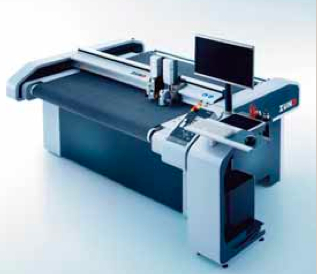There are people making good margins printing inflatables. Dan Vandevoorde of Dutch-based specialist printer X-Treme Creations is proof of that. So should you be getting in the swing and joining him?
Features
All change?
Things are happening that will push through the barriers wide-format has with VDP adoption. Nessan Cleary explains.
Variable data is one of the great promises of digital printing, making it possible to vary parts of a job across a complete run. We’ve all seen examples of variable data printing because it’s a core technology in transactional printing on things like our bank statements.
Putting out the flags
Yes, it’s getting close to the extravaganza that is Drupa and its celebration of all things print related. If you’ve not booked your flight to Dusseldorf, this is why you should…
“Many parts of the industry were hit hard by the economic crisis of 2008 and 2009, and they are still dealing with the consequences today, with a fundamental transition in the print and media industry. Web-based technologies, digital printing, smart phone communication and of course classical sheet and web offset printing - in particular linking different technologies - these are all just a few of the headlines for current discussions. Drupa 2012 has come at the right time in this phase of transition. It facilitates the future transition to Print 2.0 and actively pursues this with its conceptual cornerstones.”
Delving into the data
Can you improve your data management to better target customers and better service them once you have them? Tony Hodgson from print technology, data management and marketing consultancy Individua guides you to better performance with these top tips.
Make a difference
Your customers want print with a ‘wow’ factor? You can give it to them. John Charnock, director of Print Research International, looks at the special effects you can now incorporate.
‘Special effects’ is such a generic term that it could cover almost any type of print beyond four-colour output. But for the sake of this article let’s take a look at three key areas of development: effects with inks, with substrate and with software - or indeed the combination of any of the three.
Fujifilm Acuity 1600
Nessan Cleary reviews this entry-level printer which that claims the fastest speed in its class.
Fujifilm has launched the Acuity 1600 LED, a 1.6m hybrid printer built around a roll-fed chassis with tables supplied for handling rigid media. It’s built on a Mimaki chassis but product manager Gary Barnes says that it’s the Fujifilm technology that sets it aside: “This includes the ink that is developed by us and tuned for LED. That then passes through Q class heads from Fujifilm Dymatix, the same family that is used on the Inca Onset. And then there is the Fujifilm designed LED curing system.”
IR talks to...David Bartlett, Brandit Furniture
The much respected designer and founder of the new Brandit Furniture venture, which offers wide format-printers a new revenue stream.
Designer David Bartlett’s contact book reads like Who’s Who – and soon you could be in there with the great and good given he’s asking printers interested in getting involved with his new project, Brandit Furniture, to get in touch.
An Industrial Revolution
How advances in digital wide-format inkjet printing are attracting the attention of other industries, bringing new custom well beyond the traditional sign and display markets.
Inkjet technology is moving way beyond its traditional sign and display applications and seeping into new areas. Fabulous, experimental adaptations of it have been happening for some time now and are becoming closer to viable reality. Take for example, 3D concrete printing, which has the potential to totally transform architectural and building processes and practices.
Exploring the possibilities
Did you miss out on the Planet Friendly talks that formed part of the Explore Conference at Fespa Digital? If so, here are the edited highlights.
Printers attending Fespa Digital this year really missed out. As part of its Explore Conference during the show, Fespa ran a two-day Planet Friendly series of talks, those on the first day built around the theme ‘Why be green?’ and on the second around ‘How to be green?’ Attendance was pitiful, leaving speakers who had honed their presentations to a print audience talking largely to other presenters, journalists and representatives from interested exhibitors - a shame because the environment, and print companies’ attitudes and behaviour towards it, is clearly becoming an ever bigger issue with huge potential impact on how the print industry as a whole and the specific print businesses within it progress.
Pensions powers
Phil Thompson, head of BPIF Business, takes you through the seven steps to prepare for automatic enrolment.
EMAS. What’s that?
EMAS stands for ‘Eco Management and Audit Scheme’ but you can be forgiven for not realising that – it’ not exactly well known. But it’s about to be, so listen up.
Cashback deal on latest HP Designjet printers at Sign and Digital UK
The first 50 companies to confirm their order for a HP Designjet L28500 or HP Designjet L26500 printer at Sign and Digital UK will be able to claim back £1000.




